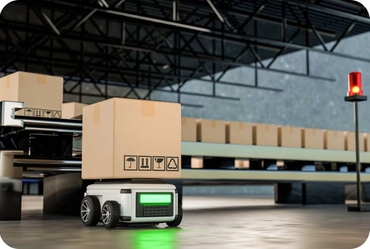
What Are the Emerging Technologies for Cost-Efficient Global Shipping?
The global shipping industry is constantly evolving to meet growing demands for efficiency and sustainability. Emerging technologies are playing a pivotal role in reducing costs, improving operational efficiency, and minimizing environmental impact. Here are the key technologies transforming global shipping.
1. Artificial Intelligence (AI) and Machine Learning (ML)
AI and ML are revolutionizing decision-making and operational efficiency in shipping. Key applications include:
- Predictive Analytics: Anticipating demand, weather patterns, and potential disruptions to optimize routes and schedules.
- Dynamic Pricing: Adjusting shipping rates based on demand and market trends in real time.
- Process Automation: Streamlining repetitive tasks like documentation and customs compliance.
By reducing errors and improving resource allocation, AI and ML significantly cut operational costs.
2. Internet of Things (IoT)
IoT devices enhance supply chain visibility and efficiency by enabling real-time monitoring. Applications include:
- Smart Containers: Tracking location, temperature, and humidity to ensure goods are transported under optimal conditions.
- Fleet Management: Monitoring fuel consumption and vehicle performance to reduce operating expenses.
- Asset Tracking: Improving inventory management and reducing losses from theft or damage.
IoT fosters greater transparency and enables proactive issue resolution.
3. Blockchain Technology
Blockchain offers secure and transparent data management, reducing inefficiencies and costs in global shipping. Key benefits include:
- Smart Contracts: Automating payment and verification processes to reduce delays and paperwork.
- Fraud Prevention: Ensuring the authenticity of trade documents and minimizing risks of counterfeit goods.
- Enhanced Traceability: Providing end-to-end visibility of goods in the supply chain.
This technology builds trust among stakeholders and streamlines complex logistics operations.
4. Autonomous Vehicles and Drones
Automation in transportation is redefining cost-efficiency in logistics. Examples include:
- Self-Driving Trucks: Reducing reliance on drivers and improving delivery speed.
- Maritime Autonomous Surface Ships (MASS): Cutting labor and operational costs in sea freight.
- Drones: Enhancing last-mile delivery efficiency, especially in remote areas.
These innovations lower labor costs and reduce delays caused by human error.
5. Advanced Robotics
Robotics is transforming warehouse and port operations. Key advancements include:
- Automated Guided Vehicles (AGVs): Moving goods within warehouses with precision and efficiency.
- Robotic Arms: Loading and unloading containers faster and with greater accuracy.
- Pick-and-Pack Systems: Automating order fulfillment to reduce processing time and labor costs.
Robotics enhances productivity and reduces manual intervention.
6. Digital Twins
Digital twins create virtual replicas of physical assets or processes, enabling better planning and optimization. Use cases include:
- Supply Chain Simulation: Testing different scenarios to identify cost-saving strategies.
- Performance Monitoring: Predicting maintenance needs for ships and vehicles to prevent costly breakdowns.
- Port Management: Optimizing container movement and reducing congestion.
This technology enhances decision-making and operational efficiency.
7. Green Technologies
Sustainability is becoming a priority in shipping, and green technologies are leading the way. Innovations include:
- Alternative Fuels: Using liquefied natural gas (LNG), hydrogen, or biofuels to reduce carbon emissions.
- Energy-Efficient Ship Designs: Incorporating wind-assist propulsion and solar panels.
- Carbon Capture Systems: Reducing greenhouse gas emissions from shipping operations.
Adopting these technologies helps businesses meet regulatory requirements while cutting long-term costs.
8. Big Data Analytics
Big data analytics provides actionable insights for cost optimization and efficiency. Key applications include:
- Route Optimization: Using historical and real-time data to identify the most efficient shipping routes.
- Demand Forecasting: Anticipating market needs to improve inventory planning and reduce storage costs.
- Risk Management: Identifying potential disruptions and mitigating their impact on supply chains.
Data-driven decision-making ensures more efficient and cost-effective operations.
9. 3D Printing (Additive Manufacturing)
3D printing is revolutionizing the manufacturing and logistics landscape. Key benefits include:
- Localized Production: Reducing shipping distances by producing goods closer to end-users.
- On-Demand Manufacturing: Eliminating the need for large inventories and associated storage costs.
- Spare Parts Availability: Manufacturing replacement parts locally to minimize downtime.
This technology shortens supply chains and reduces transportation expenses.
10. Digital Freight Marketplaces
Online platforms connecting shippers with carriers are streamlining logistics. Features include:
- Dynamic Matching: Pairing shipments with available carriers to maximize efficiency.
- Transparent Pricing: Offering real-time cost comparisons to find the best rates.
- Performance Metrics: Tracking carrier reliability and delivery success rates.
These marketplaces simplify freight management and reduce administrative overhead.
Conclusion
Emerging technologies are reshaping global shipping by reducing costs, improving efficiency, and enhancing sustainability. From AI and IoT to blockchain and green technologies, these innovations enable businesses to navigate the complexities of international logistics effectively. Embracing these advancements ensures a competitive edge in an increasingly demanding market.
- 1. Artificial Intelligence (AI) and Machine Learning (ML)
- 2. Internet of Things (IoT)
- 3. Blockchain Technology
- 4. Autonomous Vehicles and Drones
- 5. Advanced Robotics
- 6. Digital Twins
- 7. Green Technologies
- 8. Big Data Analytics
- 9. 3D Printing (Additive Manufacturing)
- 10. Digital Freight Marketplaces
- 11. Conclusion
Related Articles

What Trends Will Shape Cross-Border Logistics in the Next Decade?

